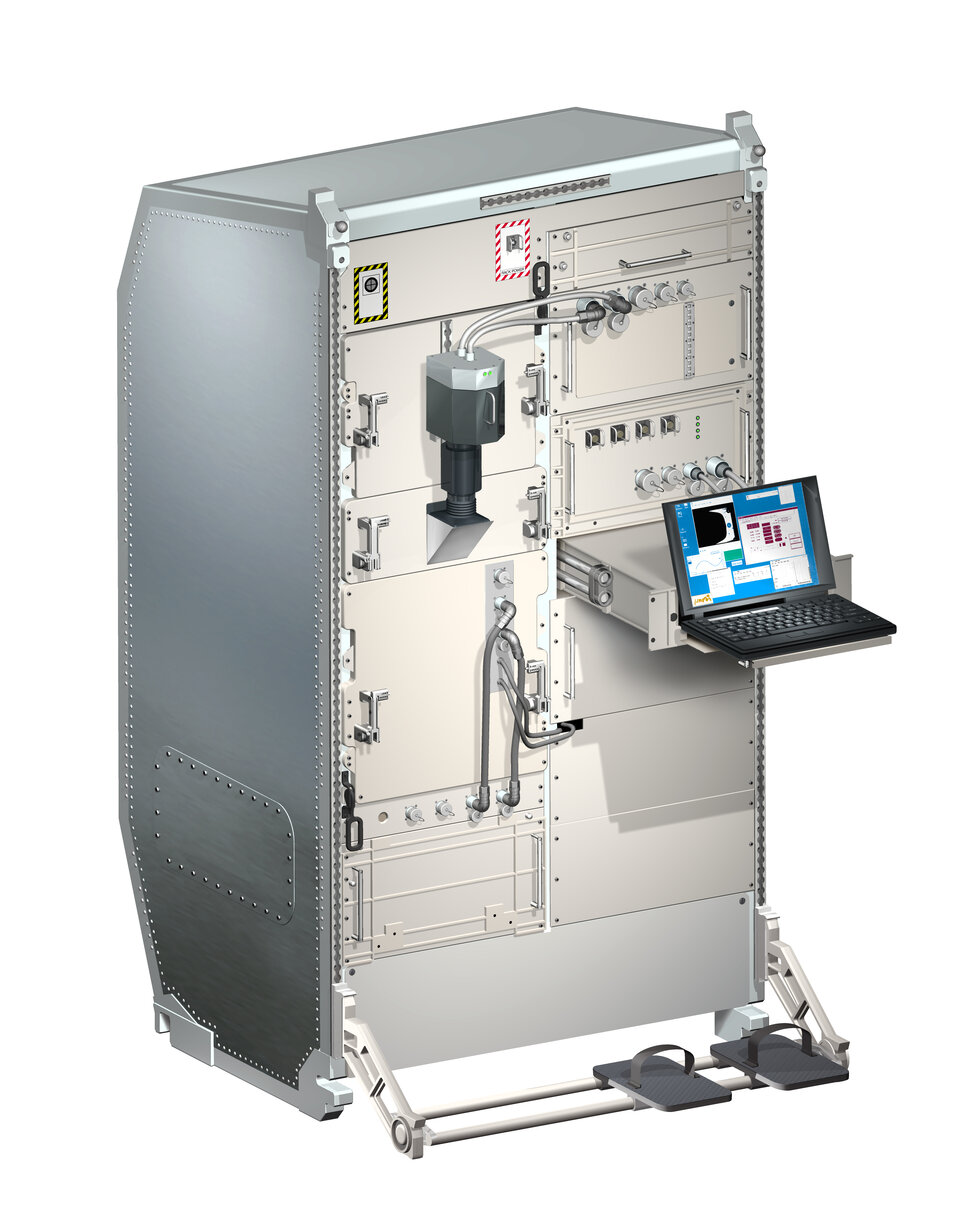European Transport Carrier
Multi-user logistics carrier in Columbus
The European Transport Carrier carried payloads that could not be launched with ESA facilities because of stowage or transport limitations.
In orbit it served as a workbench and stowage facility to support experiments with Biolab, the Fluid Science Lab, the European Physiology Modules and the European Drawer Rack.
Accommodation and transport
The European Transport Carrier was launched inside the Columbus laboratory in 2008. Before that it was used in the Multi-Purpose Logistics Module that flew to the International Space Station in the Space Shuttle multiple times.
The carrier was reconfigured on Earth to accommodate specific transport and stowage needs for each flight. It was designed to serve for up to 15 flight missions.
Utilisation scenario

On the International Space Station the doors of European Transport Carrier were unlocked for access to the facility.
The Zero-g Stowage Pockets in the upper and lower part of Carrier could only be used in weightlessness. The stowage containers could be used for many kinds of payload stowage activities.
When the Carrier was prepared for download to Earth, all the Zero-g Stowage Pockets were first emptied, folded, and stowed away. The doors were then locked again and the whole rack was transferred for landing.
Schedule
The European Transport Carrier was launched on board the STS-122 Space Shuttle mission in the Columbus laboratory.
The facility was replaced by the European Drawer Rack-2 and the European Transport Carrier left the International Space Station for the last time on the Japanese cargo spacecraft HTV-9 on a planned destruction in our atmosphere.


